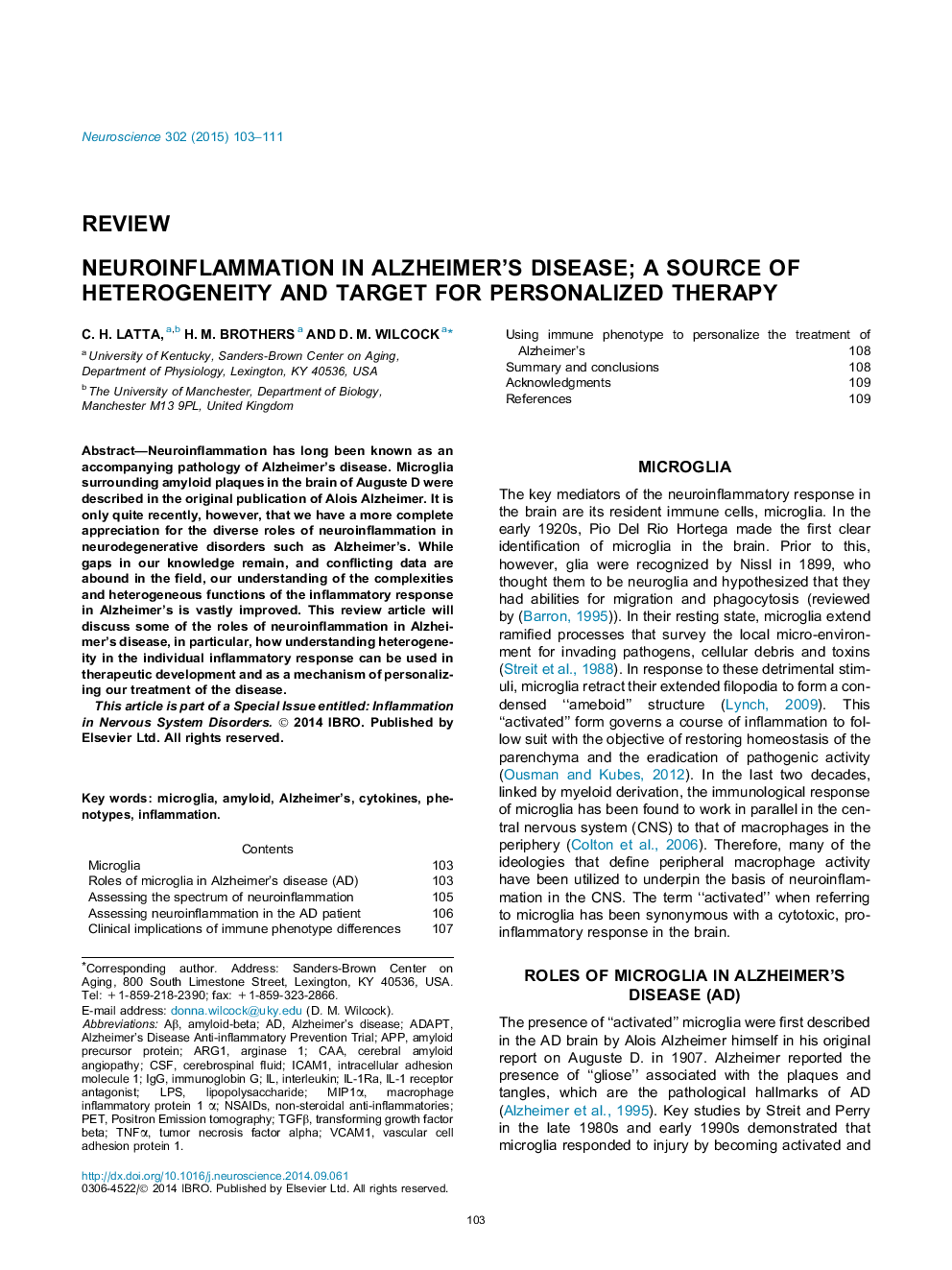| Article ID | Journal | Published Year | Pages | File Type |
|---|---|---|---|---|
| 6272054 | Neuroscience | 2015 | 9 Pages |
â¢Microglial heterogeneity is discussed in relation to Alzheimer's disease and potential functions in the disease.â¢The potential beneficial and detrimental roles of inflammation in Alzheimer's disease are discussed.â¢Introduction of the concept of an inflammatory spectrum to better characterize neuroinflammatory states in disease.â¢A discussion of the role of neuroinflammatory heterogeneity in the treatment and prevention of Alzheimer's disease.
Neuroinflammation has long been known as an accompanying pathology of Alzheimer's disease. Microglia surrounding amyloid plaques in the brain of Auguste D were described in the original publication of Alois Alzheimer. It is only quite recently, however, that we have a more complete appreciation for the diverse roles of neuroinflammation in neurodegenerative disorders such as Alzheimer's. While gaps in our knowledge remain, and conflicting data are abound in the field, our understanding of the complexities and heterogeneous functions of the inflammatory response in Alzheimer's is vastly improved. This review article will discuss some of the roles of neuroinflammation in Alzheimer's disease, in particular, how understanding heterogeneity in the individual inflammatory response can be used in therapeutic development and as a mechanism of personalizing our treatment of the disease.
